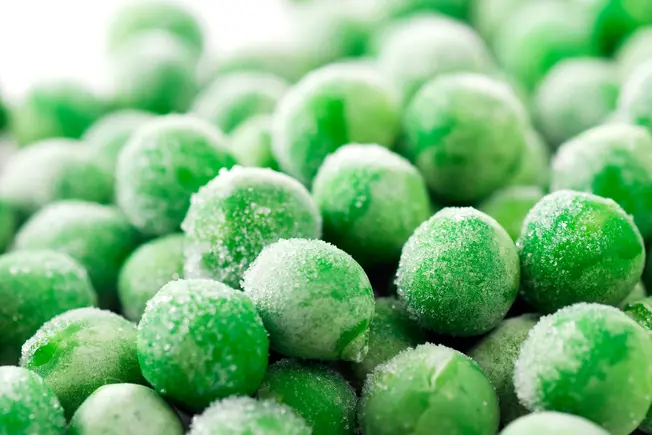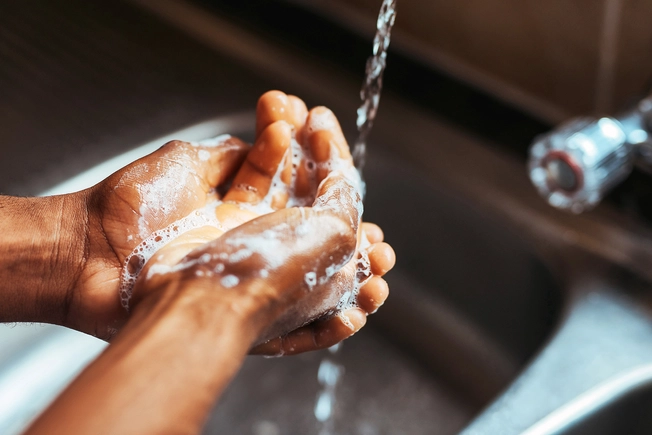Frozen Food Mistakes


Unsafe Thawing
Frozen foods are hot: Americans buy more than $53 billion worth of chilled convenience every year. Everything’s safe that’s stored at 0 degrees F. But microbes like bacteria, yeast, and mold start growing as soon you pull those peas out of the freezer. Plan ahead and thaw your food in the refrigerator. The microwave or cold water is also safe. Never thaw frozen foods on your kitchen counter, outdoors, in your garage, or in the dishwasher.

Assuming Food Is Pre-Cooked
Pop quiz: If your frozen chicken breast has grill marks, it’s pre-cooked, right? Wrong. In a recent study, 22% of participants thought a raw frozen chicken breast was either cooked or partially cooked, or they weren’t sure. Frozen foods can look cooked, and labels can be confusing. If your food is labeled “cook and serve,” “ready to cook,” or “oven ready,” treat it like it’s raw to avoid foodborne illnesses.

Not Cleaning Your Microwave After Every Use
Your microwave is one of the safest places to thaw frozen foods, but it may not be safe afterwards. Think about it: You thaw meat in the microwave, and some meat juice drips down or splatters on the wall. Anything you put in there afterwards could be cross-contaminated by the uncooked meat juice. Clean your microwave with a sanitizing wipe or light detergent after every use so it’s not a box of bacteria.

Not Washing Your Hands First
Don’t be the one who transfers germs to your frozen food. To prevent cross-contamination, wet your hands, lather them with soap, scrub for 20 seconds, then rinse and dry.

Forgetting to Check for Recalls
Between the time you put food in your freezer and take it out, it may have been recalled. Do a quick check on the FoodKeeper app or at FoodSafety.gov to avoid the foodborne bacterial illness listeriosis. If your food has been recalled, return it for a refund or close it up so that no other animal or human can eat it, and throw it away.

Settling for Mushy Veggies
Most vegetables are 90% water. When you freeze them, you freeze all the water in the plant cells. And when you thaw them, they’re much softer (and yes, mushier) than when they were raw. That doesn’t mean you have to disguise them in soups and stews. A convection oven or air fryer can crisp them up on the outside and preserve the moisture within.

Not Boiling Your Berries
Frozen berries may add more than vitamins and minerals to your smoothie. They can also carry bacteria and viruses from hands, work surfaces, or the water they were washed in. Freezing doesn’t kill bacteria, so experts recommend you boil imported frozen berries for a minute or two before you use them. Don’t know where your frozen berries are from? Assume they’re imported if you don’t see a country of origin on the label.

Not Draining Your Spinach
Frozen spinach is a health-smart staple: It has a little less folate and B vitamins than fresh leaves, but you can toss it directly in soups, sauces, or stir-fries to amp up the greens. If you use it in a casserole or a pasta dish like lasagna, thaw it and squeeze the water out first so it doesn’t make your dish watery. Pro tip: Save and refrigerate your nutrient-packed spinach water to add to soups or stews.

Skipping the Food Thermometer
Take the temp of the situation: A food thermometer is the best way to make sure your frozen meats are safe to eat. For poultry, stick the thermometer in the thickest part of the piece. It should be 165 F or higher. Beef, steak, veal, lamb, and pork are safe at a minimum of 145 F after resting for 3 minutes.

Not Blanching Vegetables First
Vegetables have chemical compounds called enzymes that control color, nutrient content, and flavor. When you freeze produce instead of buying it frozen, you have to inactivate the enzymes so they don’t lose everything that makes them good. Blanch before you freeze: Boil or steam vegetables for 2 minutes, then cool them in an ice bath to stop them from cooking.

Overcooking Vegetables
Imagine a raw broccoli floret and a frozen broccoli floret. Once you thaw the frozen one, it won’t be as firm as the raw one and will cook much quicker. To avoid overcooking frozen vegetables, cut the time you cook them in half.

Not Sealing the Freezer Bag
When air hits anything frozen, it causes freezer burn. Your food may look brown, gray, dry, or a combo of all three. It may not taste great, but it’s still safe to eat. To avoid freezer burn, seal all packaging tightly, and make sure to get out all the air you can. You can freeze meat and poultry in its original package, but protect it with an extra layer of tin foil or a freezer bag (which is different from a storage bag).